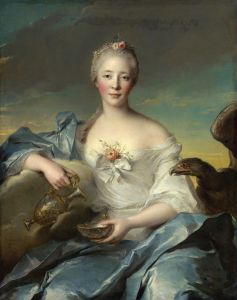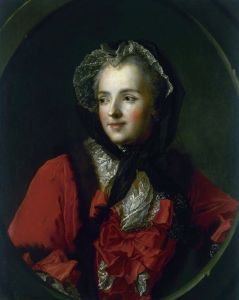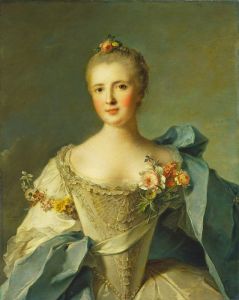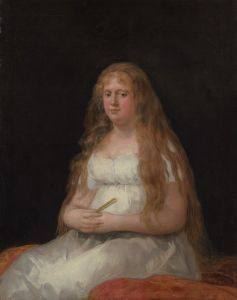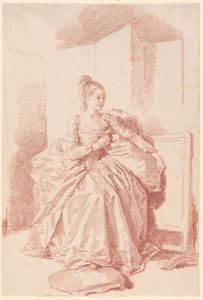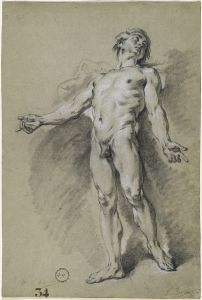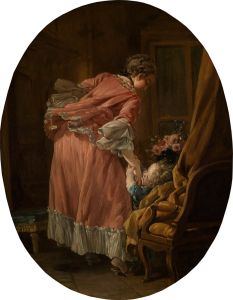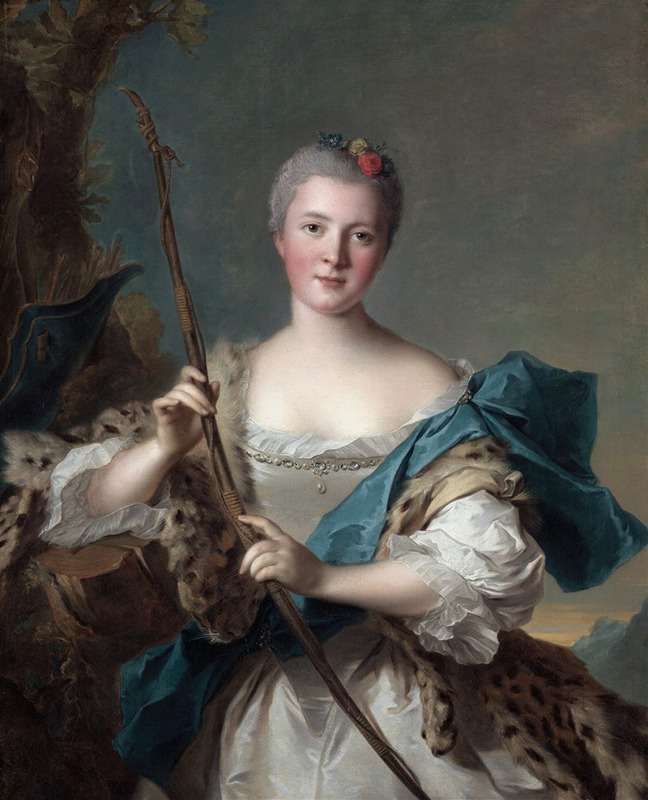
Portrait of a Woman as Diana
A hand-painted replica of Jean-Marc Nattier’s masterpiece Portrait of a Woman as Diana, meticulously crafted by professional artists to capture the true essence of the original. Each piece is created with museum-quality canvas and rare mineral pigments, carefully painted by experienced artists with delicate brushstrokes and rich, layered colors to perfectly recreate the texture of the original artwork. Unlike machine-printed reproductions, this hand-painted version brings the painting to life, infused with the artist’s emotions and skill in every stroke. Whether for personal collection or home decoration, it instantly elevates the artistic atmosphere of any space.
"Portrait of a Woman as Diana" is an oil painting by the French Rococo artist Jean-Marc Nattier, created in 1745. Nattier was renowned for his portraits of the French aristocracy, often depicting his subjects in mythological or allegorical roles. This particular painting exemplifies his skill in combining portraiture with classical themes, a popular trend among the elite of 18th-century France.
The painting portrays an unidentified woman dressed as Diana, the Roman goddess of the hunt, the moon, and nature. Diana is traditionally depicted with attributes such as a bow and arrows, a crescent moon tiara, and accompanied by a hunting dog or stag. In Nattier's portrait, the woman is adorned with a crescent moon in her hair, a common symbol of Diana, and is dressed in a flowing, classical-style garment. She holds a bow in her left hand, reinforcing her role as the huntress. The background of the painting features a landscape that suggests a natural, wooded setting, further emphasizing the connection to Diana's domain.
Jean-Marc Nattier was born in Paris in 1685 into a family of artists. He initially trained under his father, Marc Nattier, and later studied at the Académie Royale de Peinture et de Sculpture. Nattier gained early recognition for his historical paintings, but he found greater success and patronage in portraiture. His ability to flatter his subjects while incorporating elements of classical mythology made him a favorite among the French nobility, including members of the royal family.
"Portrait of a Woman as Diana" is a testament to Nattier's talent for capturing the elegance and grace of his sitters. The painting's composition, with its delicate balance of realism and idealization, showcases his mastery of the Rococo style. The soft, pastel colors and the intricate details of the woman's attire and accessories are characteristic of Nattier's work, reflecting the opulence and refinement of the period.
The identity of the woman in the portrait remains unknown, which is not uncommon for many of Nattier's works. During the 18th century, it was fashionable for aristocratic women to be depicted as mythological figures, symbolizing virtues or qualities they wished to be associated with. By choosing to be portrayed as Diana, the sitter may have been emphasizing qualities such as chastity, independence, and a connection to nature.
Today, "Portrait of a Woman as Diana" is housed in the Musée Cognacq-Jay in Paris, which holds a significant collection of 18th-century art. The painting remains an important example of Nattier's contribution to Rococo portraiture and his ability to blend portraiture with classical mythology. It continues to be admired for its artistic merit and its reflection of the cultural and social values of the time.
In summary, Jean-Marc Nattier's "Portrait of a Woman as Diana" is a notable work that captures the essence of 18th-century French portraiture. Through his skillful depiction of the sitter as a classical goddess, Nattier not only highlights the beauty and elegance of his subject but also provides insight into the artistic and cultural milieu of the Rococo period.





